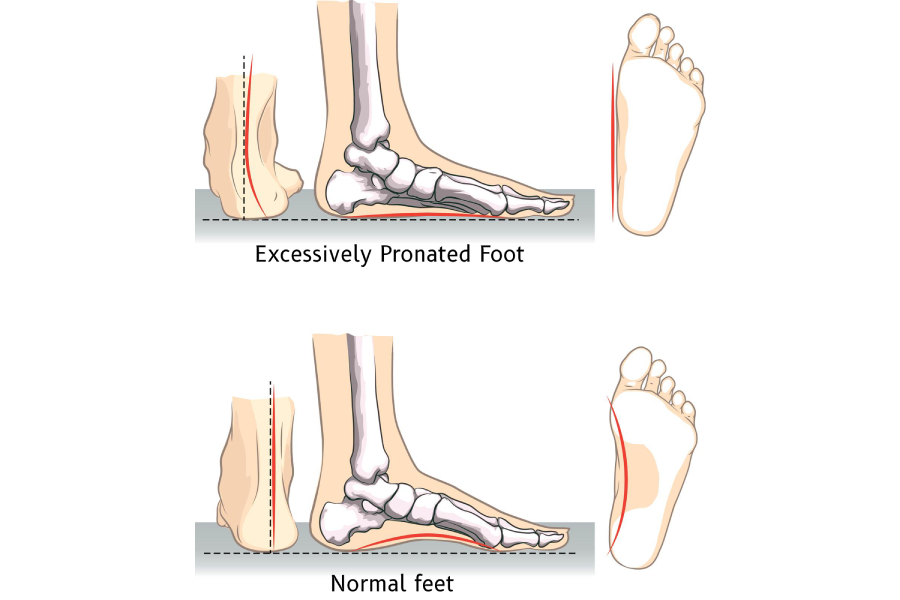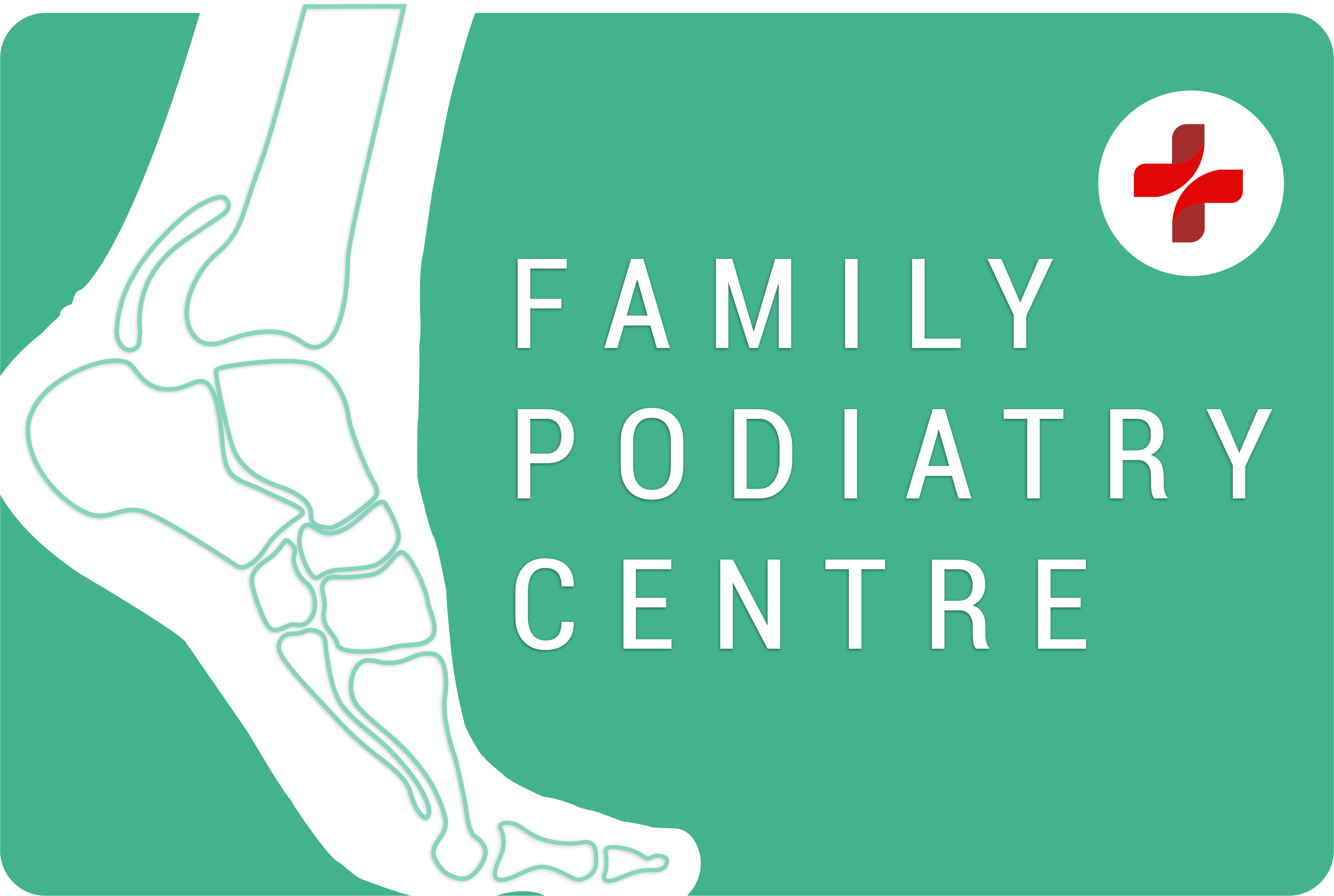Signs of Overpronation or Supination in Your Feet

Pronation and supination are natural and essential movements that occur in joints capable of moving in three different planes. These movements are fundamental to various bodily functions, including how we walk, run, and maintain balance. However, when pronation or supination exceeds normal ranges, they can lead to structural imbalances and potential injuries.
Read on to learn more about the signs of overpronation or oversupination in your feet and how they can affect your movement.
What Are Pronation and Supination?
Pronation occurs when a joint moves inwards across three different planes. A simple way to visualise this is by holding a jug of water and pouring it into a glass. The inward tilting motion of the jug mimics pronation. Supination, on the other hand, is the opposite movement, like rotating the jug outward.
In the context of the foot, pronation involves the inward rolling of the foot and lowering of the arch, while supination is the outward rolling of the foot. These movements help absorb shock and propel us forward while walking or running (Cote et al., 2005b). However, excessive pronation or excessive supination can disrupt normal biomechanics and lead to discomfort or injury.
Why Excessive Pronation and Excessive Supination Matter
Pronation and supination are normal, but overpronation and oversupination can become problematic. When the foot moves excessively beyond its natural range, it may cause strain on surrounding structures.
For instance, if excessive pronation occurs, the foot continues rolling inward even after it has completed its natural motion, similar to over-tilting a jug and spilling its contents. Unlike the hand, which moves freely in an open kinetic chain, the foot is in a closed kinetic chain (CKC)—meaning the ground exerts force back on the foot. This repetitive force can lead to stress-related issues, misalignment, and discomfort in the feet, knees, and even the lower back.
Excessive supination follows a similar principle. If the foot moves excessively outward, it can create excessive pressure against the ground, increasing the likelihood of injury.
The Challenge of Defining "Excessive"
Despite ongoing research since the 1990s, there is no universally accepted threshold for what constitutes excessive pronation or excessive supination. The definition largely depends on an individual’s biomechanics, activity levels, and overall musculoskeletal health (Golightly et al., 2014b).
Some argue that an individual can still function well despite having an overpronated or oversupinated foot. High-profile athletes like Usain Bolt have been observed running at elite levels despite pronating significantly. However, comparing an elite athlete to the general population can be misleading as what works for one person might not work for another.
When Does Overpronation or Oversupination Become a Problem?
The issue arises when excessive movement leads to subluxation—when a joint moves beyond its normal range and alignment. Every joint has a specific range in which it should function. When pronation or supination exceeds this limit, it can contribute to stress on surrounding structures, potentially leading to conditions such as:
- Knee misalignment (knock knees or bow legs)
- Lower back pain
- Ankle instability
- Increased risk of plantar fasciitis
- Unusual shoe wear patterns
- Frequent fatigue or discomfort after standing or walking for extended periods
Identifying Potential Issues
Because the foot is typically enclosed in a shoe, many people are unaware of their excessive pronation or excessive supination tendencies. However, some common signs may indicate an imbalance:
- Friends or family comment on your unusual walking pattern
- You notice your knees are either too close together (knock knees) or too far apart (bow legs)
- You frequently experience lower back pain after standing for long periods
- You fatigue faster than others during exercise
- Excessive shoe wear in particular areas
Excessive pronation or excessive supination can even lead to issues like ingrown or black toenails, which may be a sign of improper foot mechanics. Seeking professional evaluation and treatment, such as ingrown toenail treatment, can help address these underlying causes.
Should Everyone With Overpronation or Oversupination Seek Treatment?
Some individuals can function without issues despite having excessive pronation or excessive supination, while others may develop pain or injuries. Factors such as body weight, activity level, and overall biomechanics influence whether intervention is required.
However, if left unaddressed, excessive pronation or excessive supination may lead to compensatory movements in other joints, which can cause long-term wear and tear on the knees, hips, and spine. While an individual might not feel immediate discomfort, allowing joints to move beyond their intended range can lead to problems over time, therefore, it is advised to seek professional assessment from a podiatrist.
What Can You Do?
If you suspect you have issues with excessive pronation or excessive supination, consider:
- Observing your gait and posture
- Checking your footwear for uneven wear patterns
- Record your running and walking style to look for anything that seems unusual
- Seeking a professional assessment if you experience pain, discomfort, or fatigue related to movement
- Be careful of incorrect footwear advice from untrained persons
While there is no one-size-fits-all answer, understanding the role of pronation and supination and their excessive forms, can help you make informed decisions about your foot health and overall well-being.
Conclusion
If you suspect that excessive pronation or excessive supination may be affecting your posture or causing discomfort, a professional assessment can help identify the best course of action. At Family Podiatry Centre, our specialists provide expert evaluations and personalised treatment plans to support healthy foot function and overall well-being. Schedule a consultation today to take the first step toward better mobility and comfort.
Disclaimer: The word "treatment" in this article refers to the care and management of a patient’s health to prevent, cure, or improve a condition. Treatment results vary and do not necessarily indicate a cure.
References:
1. Cote, K.P., Brunet, M.E., Gansneder, B.M. and Shultz, S.J., 2005. Effects of pronated and supinated foot postures on static and dynamic postural stability. Journal of Athletic Training, https://pmc.ncbi.nlm.nih.gov/articles/PMC1088344/.
2. Golightly, Y.M., Hannan, M.T., Dufour, A.B., Hillstrom, H.J. and Jordan, J.M., 2014. Foot disorders associated with overpronated and oversupinated foot function. Foot & Ankle International, 35(11), pp.1159–1165. doi:10.1177/1071100714543907.
